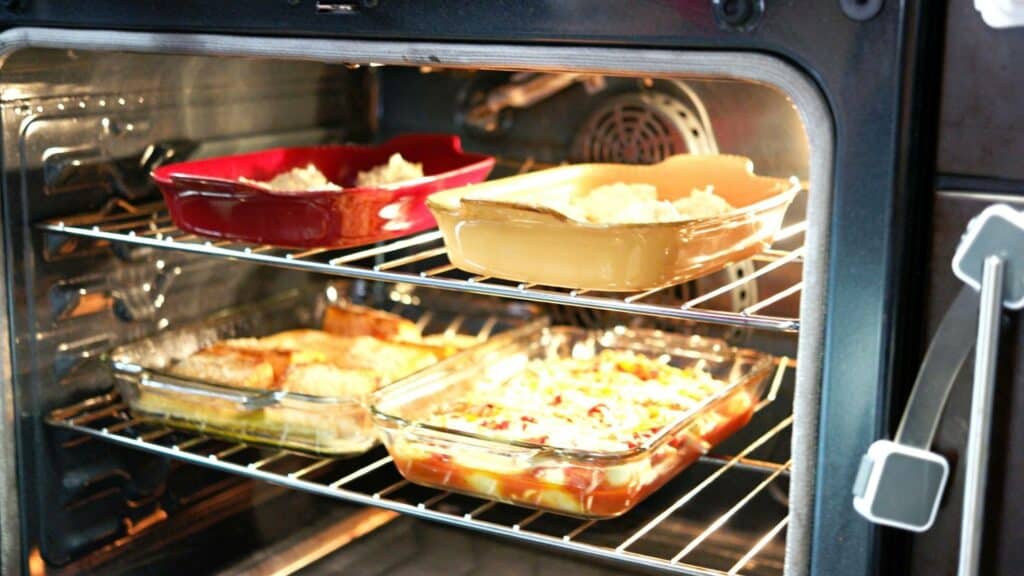You’ve been tempted, haven’t you?
I mean, sometimes it’s the only option we have at the moment…
But is it safe to do?
If you’re questioning whether you should put your glass in the oven, you’re in the right place. Oftentimes, it’s not apparent whether they’re oven-safe or not. So, how do you make sure it’s safe to do? Is your glass oven-safe? How do I make sure before? I don’t want a disaster inside my oven.
In this post, we’re going to answer if you can use glass inside your oven, how to do it safely, so you can avoid a complete mess that you’ll have to clean up after.
Why Use Glass in the Oven?
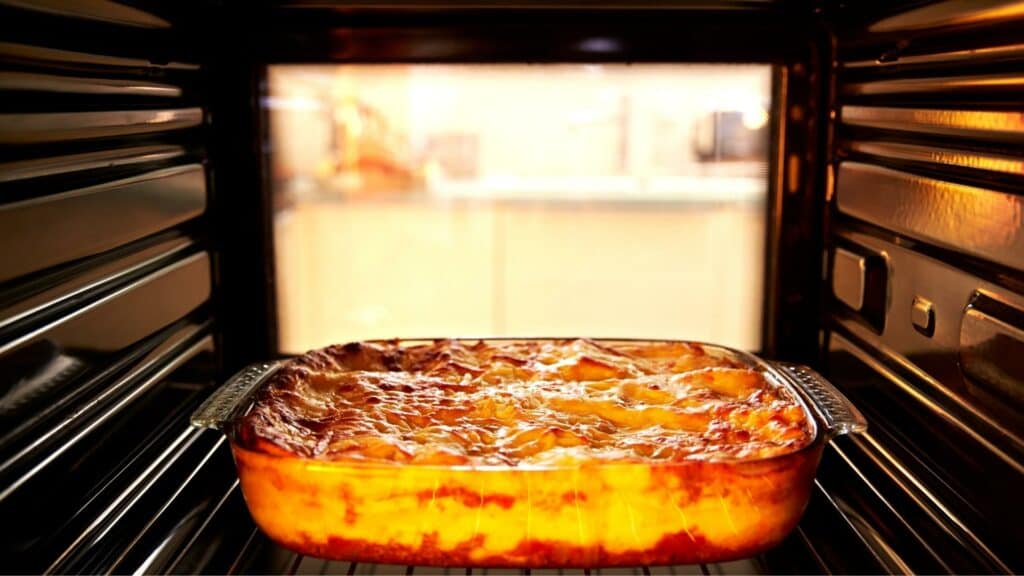
Glass is super versatile and can be used for a variety of purposes. We make cups, vases for flowers are often made of glass, and we also make, well glasses that we can drink from. Its versatility makes it ideal for many purposes. One of those purposes is cooking – but why exactly should you use it?
It’s quite affordable – glass is fairly easy to make or find, it’s a common material used for countless useful things. Making it cheaper than some alternatives. Like oven-safe glass bowls, they are durable, which means you can cook your food in them without worrying about breakages.
Glass is non-porous – meaning it won’t absorb food odors and flavors. So, you can use it for all kinds of foods and as long as you clean it well, no trace of food or food odor will remain on your bowls.
It’s easy to clean and doesn’t stain – glass is easy to clean after you use it, generally all you need to do is a rinse under hot water, and it basically cleans itself. And it can be cleaned in a dishwasher as well.
It’s transparent – glass is transparent, which means that you can see what you’re baking inside. So, you don’t really need to take out your food out of the oven and poke it with a toothpick just to check for doneness. Just look through your oven window, and you can instantly see what’s going on inside.
It’s lightweight – glass is quite light. This makes it easy to carry and store foods in large quantities without it being a bother to move around or to take out some leftovers you’ve saved in a glass bowl.
Non-reactive – glass doesn’t react with materials that are in the oven or with any types of foods, which is why it’s used in practically all science labs.
They’re great storage containers. Have some leftovers? Put them in a glass oven-safe container, and you can easily take it out the next day and quickly reheat them in the microwave (check before if it’s safe to do).
It’s eco-friendly, reusable and highly recyclable. Not only, you’re using a great material all-around, but it’s also good for the environment. Glass is easy to recycle and can be reused plenty of times to make useful new stuff.
Is My Glass Safe to Go in the Oven?
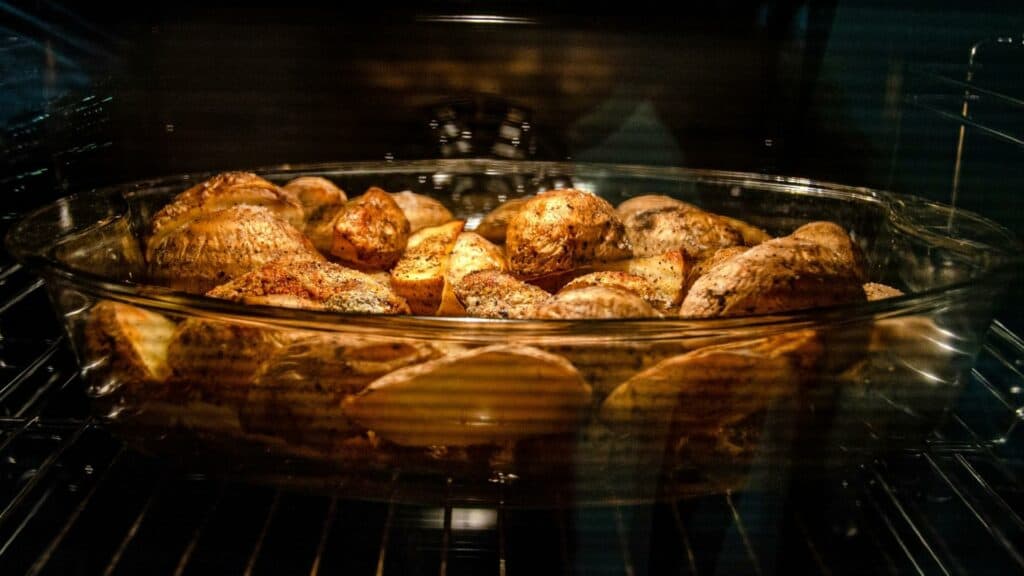
Yes, glass is oven-safe, but you should check your specific model to make sure it’s oven-safe and what’s the recommended temperature, it varies a lot.
That’s because many brands use different types of glass, and some are more suitable for the oven than others. For example, borosilicate glass is typically used to make oven-safe containers, and it can handle temperatures of 425 °F (218 °C) for normal every day use.
What Causes Glass to Shatter in the Oven?

Glass shattering in the oven sounds like a dangerous occurrence, but it’s just something that can happen. Thermal shock is when glass is exposed to a sudden temperature change. When you heat glass, thermal shock can happen if the glass is not heated uniformly, or it’s heated up or cooled down too quickly.
What happens is that when glass is heated, the glass expands. This expansion stresses the glass a lot, which increases the chances that it will break. If heat leaves the glass and the temperature drops suddenly, the glass contracts, causing the same effect.
Ovens heat unevenly, and some areas can get hotter than others. This uneven heating can cause expansion and contraction causing stress and shock in some parts of the glass, creating an imbalance.
What Type of Glass Can Go in the Oven?
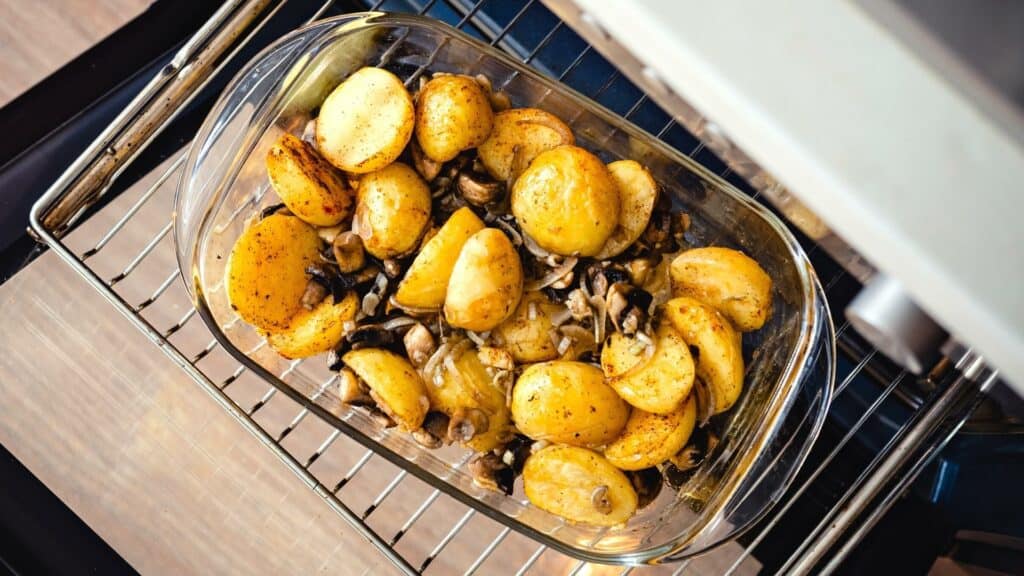
Oven safe glass is glass that can withstand temperatures up to 425 °F (218 °C). Oven safe glass is used to make casserole dishes, baking dishes, casserole lids and cookware lids.
There are three main types of oven-safe glass: tempered glass, borosilicate glass, stoneware and enamel-on-glass.
Tempered glass is oven safe because it’s a material that’s been treated and tempered enough to make it more resistant than normal glass. Tempered glass is safe to use in the oven or microwave because its outer layers are strong and can withstand the sudden heat. Thanks to the tempering, it’s also more crack resistant, so it can handle some surprisingly high falls.
Borosilicate glass is oven safe because it can withstand extreme temperatures and is extremely resistant to thermal shock and thermal expansion. Borosilicate glass is a type of glass that is made of boron trioxide and silica, minerals that create a material that can expand and contract without cracking or breaking.
Soda-lime glass – often used in Pyrex products. It has low thermal-expansion, making it ideal to be used in the oven. This is typically used in laboratories too because it’s non-reactive and can contain chemicals.
How Do You Avoid Breaking Glass in the Oven?
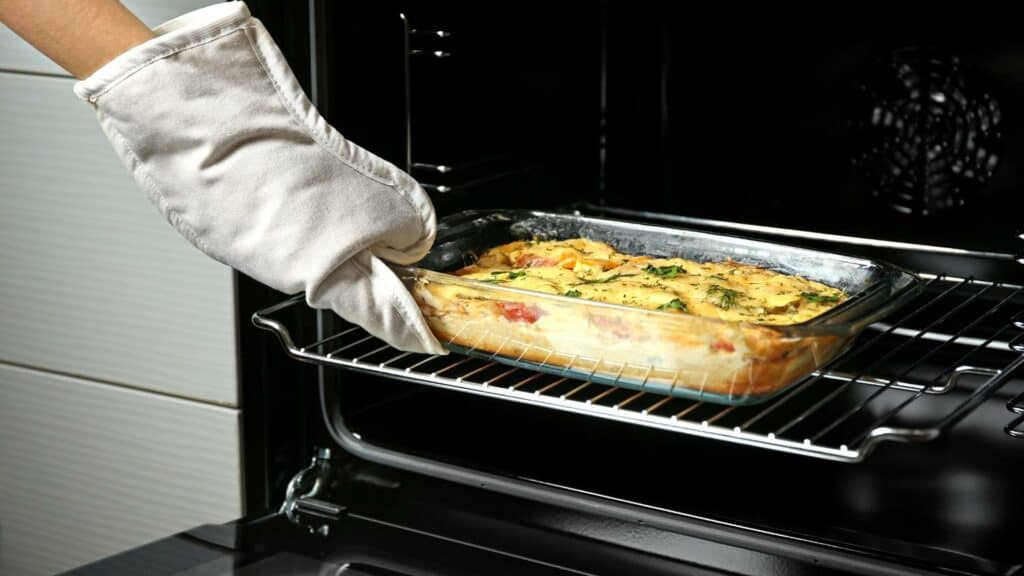
Don’t make sudden changes in temperature – this will cause thermal shock. When you’re washing it and when you’re putting down a hot piece of glass, make sure that they’re not cool. Use hot water or wait for the glass to come down in temperature naturally. And don’t put it down on a really cool surface.
Don’t overheat it – don’t heat it up too much or for too long. It will cause it to shatter inside your oven, not only making a mess that will take forever to clean up, but also a dangerous task.
Use the correct type of glass – tempered and borosilicate are the most recommended. If you’re not sure about what kind of glass you have, please be safe and make sure to check the labels. Usually, glassware will have labels at the bottom, telling you exactly wether or not it’s safe.
In Summary
There are lots of good reason to use glass instead of other materials in the oven, apart from the ease of cleaning, see-through material and non-toxic. It’s also very environmentally friendly.
Yes, some types of glass are oven-safe and can be used to bake with it without a problem. Just make sure that you have that kind of glass by checking the labels at the bottom of your glassware. If you’re not completely sure, a quick search on the internet for your specific products should quickly tell you whether it’s oven-safe or not.
